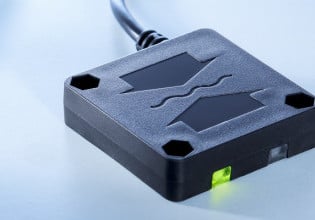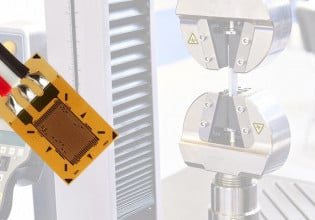C&K Seeks to Improve Remote Monitoring With Ruggedized Magnetic Proximity Sensor
Learn about the rugged sensors from C&K, the Zone 2 environments, and select features of this proximity sensor.
Proximity detection is a crucial part of modern automated systems, and choosing the right one for an application is critical.
Why Component Choice Matters
Designing a system is a two-step process. The first step is to design the theory, and the second is to bring that design into the real world. Just like circuit design, developing an industrial process requires both theory and practical knowledge.
While an industrial process may look like it will work on paper, translating that into real-life comes with challenges. For example, some environments may involve chemical vapors that can be detrimental to other processes or even create a corrosive atmosphere.
As a result, all devices in that atmosphere must be designed to resist corrosion otherwise, they may fail to result in long repair times, entire machine replacement, or worse injury due to failure.
What are Zone 2 Environments?
ATEX Zone 2, shortened to either ATEX or Zone 2, are atmospheres that may be potentially explosive. Zone 2 areas are generally expected not to be explosive. If they become explosive, they will only remain explosive for a short time.

The new MPSR range of proximity sensors. Image courtesy of C&K.
Mechanical components and machinery have to meet strict criteria such as preventing sparks when operated (such as switches) and other ignition sources. Zone 2 areas mainly apply to storage areas, but that can also include process areas. This could be areas of manufacturing, production, and operation.
C&K Introduces Ruggedized Magnetic Proximity Sensor
To meet Zone 2 areas' strict requirements, C&K announced its latest range of magnetic proximity sensors, the MPSR. These sensors are designed to be rugged while providing flexible options for a wide range of different applications.

The new MPSR range of proximity sensors. Image courtesy of C&K.
The range of sensors is non-contact, meaning that the switching action is done magnetically, and the use of magnetic technology makes the range of switches ideal for Zone 2 environments. The non-contact switch range uses an aluminum housing, while cables going to the switching mechanism are made using stainless steel.
“Magnetic proximity sensors offer non-contact object detection beyond the normal limits of products such as inductive sensors. They offer long sensing ranges within a small package size, and they can be positioned in different locations through the use of a wiring harness," Said Tanios BouRamia, Global Product Manager at C&K.
The MPSR range of switches uses hermetically sealed contacts, ensuring that any electrical sparks or arcs are contained safely. The use of Form C switching provides both normally open and closed terminals. The operating temperature range of the MPSR switches is -40°C to +80°C, and the maximum rating of the switch is 30V 3W.
The MPSR range of non-contact Zone 2 switches has potential automation and general industrial applications, including doors, limit switches, security, and IoT monitoring. The switch is also applicable to applications outside of the industry, such as automotive vehicles and storage warehouses.
Those same applications can benefit from the Form C switch as both terminals are available, thus can be used for feedback systems that need to be isolated from a load.
Do you use proximity sensors in your industrial processes?






